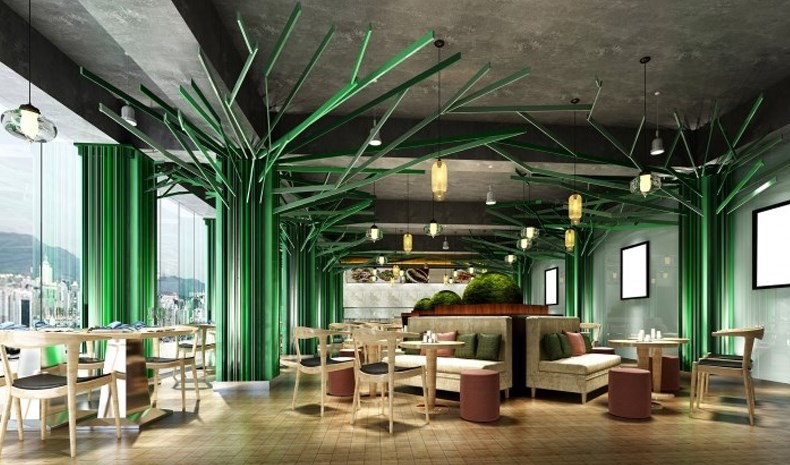The COVID-19 pandemic has put the hospitality industry in a bind. A restaurant's business plan revolves around seating and serving as many customers as possible, and a contagious disease throws a massive wrench in that plan.
Addressing the safety and health of customers while also providing a valuable and tasteful service requires a nuanced approach overall, especially as it concerns interior design and layout. Here are some design changes the restaurant industry is adopting — changes that are likely to re-engage and excite patrons as well as safeguard their wellbeing.
New Floor Plans and Interior Design

Image Source: Food & Wine Magazine
The most practical way to limit the spread of the coronavirus is to avoid close physical contact with each other. Restaurants have put this effort in place with new floor plans predicated on social distancing. Here are some of the measures restaurants have taken:
● Move tables apart and keep them away from high-traffic areas like the kitchen and bathrooms
● Separate tables with plexiglass or other barriers
● Remove bar seating, buffets, and other communal dining areas
● Arrange furniture so the staff can frequently access and clean it
● Remove unnecessary decor or table condiments
● Install hand-sanitizer dispensers at the entrances/exits
● Use signs or floor markers to direct floor traffic
These measures present a unique opportunity for restaurants to simultaneously adopt a new design/theme while improving the building's safety.
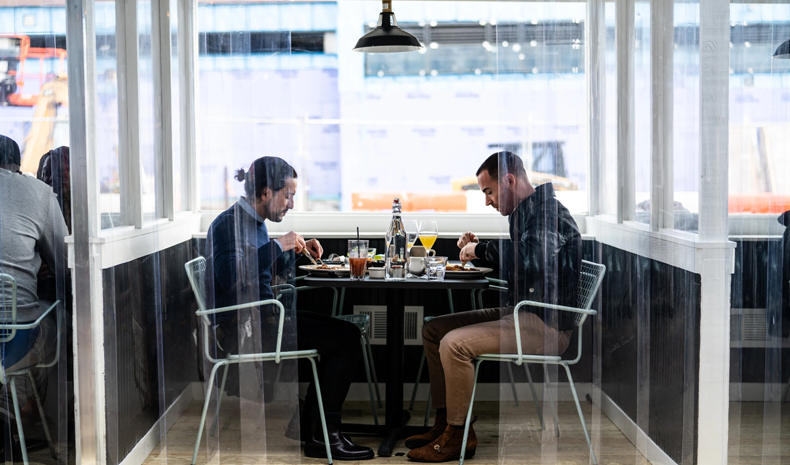
Image Source: Washingtonian
For example, they can invest in stylish tables, chairs, and appliances made of naturally antimicrobial materials like copper and quartz that will passively help prevent the spread of disease. Barriers that aim to set up some level of social distancing can become design features — living walls and eye-catching dividers can be great decoration elements while maintaining function.
Of course, the primary goal of an open floor plan is to limit physical interactions and keep the restaurant's capacity at safe levels while providing customers with a pleasant experience.
New Ideas for Outdoor Seating
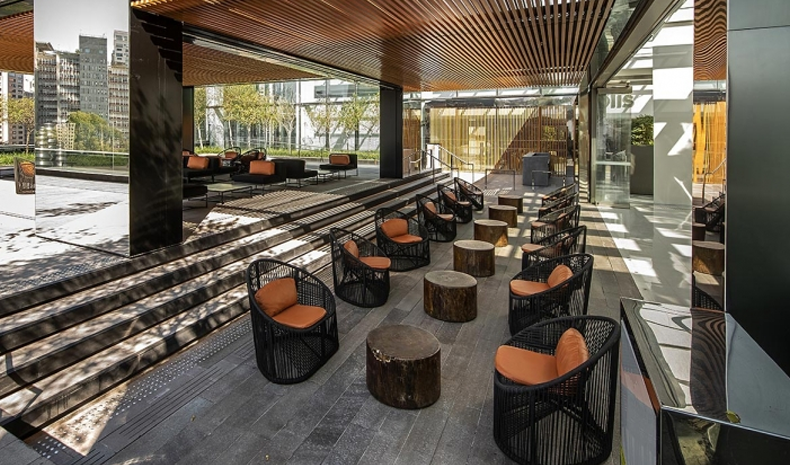
Image Source: Cubo JK by CARBONDALE
Outdoor dining is a crucial design ingredient for restaurants in 2022 because it creates a safer environment for diners and staff. Many contagious diseases don't spread as easily outside. Some patrons still feel uneasy dining indoors and might even request outdoor seating.
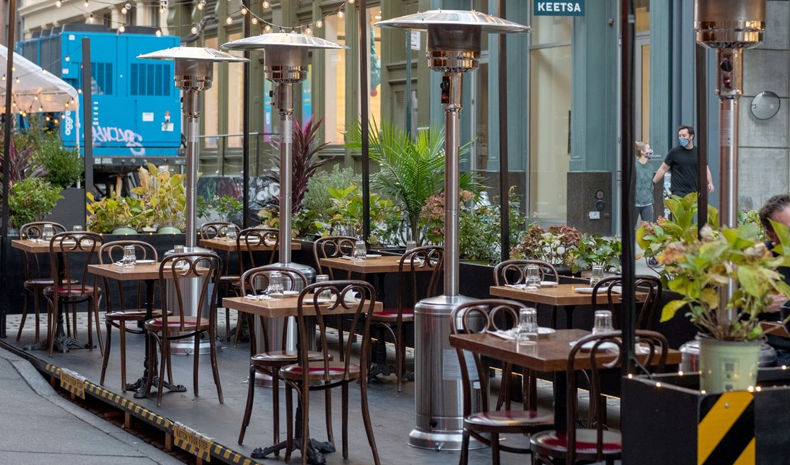
Image Source: Bloomberg.com
Outdoor dining has become a necessity for many restaurants during the pandemic, which means they need to maintain that seating arrangement year-round. This has been a challenging task for those in cold and unstable climates, but some strategies have proven effective:
● Heat: Outdoor fireplaces, portable propane heaters, infrared heaters, and other built-in heating equipment
● Shelter: Roof overhangs, awnings, pavilions, and roll-down wall panels
Cities with rough weather conditions like Montreal long ago perfected outdoor hospitality in frigid temperatures with designs like the winter yurt. Yurts have provided the template for today's "dining pods" — not the one-table bubbles we saw in 2020, but more open spaces that enhance the dining experience without stifling the available airflow.
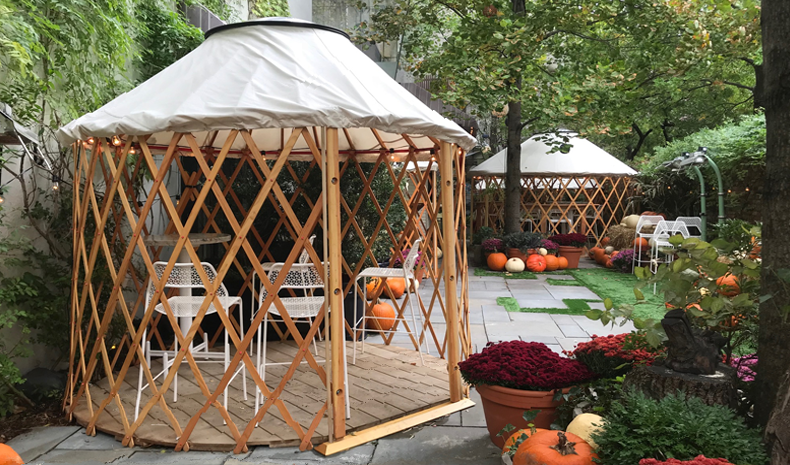
Image Source: Camping Yurts
We've already seen restaurants adopt yurt-like tents and coverings for outdoor dining. Depending on how much room they have, they can double or triple a restaurant's capacity, which gives this seating arrangement the potential to revolutionize the restaurant industry.
New Focus on Ventilation

While customers may not consciously experience the impact of this one, it can make a significant difference for health outcomes. Restaurants aren't the only sector placing increasing importance on building ventilation. Schools, office buildings, and even homeowners are all looking to reinvest in building systems that more effectively filter and move fresh air through enclosed spaces.
Building designers can focus on passive ventilation strategies to help air flow through new structures naturally and sustainably. Passive ventilation relies on window orientation and the natural upward flow of warm air to keep clean air moving through a structure without requiring significant extra energy.
HVAC technologies, of course, are also essential considerations for improving restaurant ventilation. Upgraded HVAC systems that rely less on recirculated air can help keep breathable air fresher and cleaner. Restaurant owners are also looking into better filters and ultraviolet irradiation to kill or inactivate microbes.
Building ventilation can be expensive, so many small restaurants will struggle to lean on this strategy in the near future. However, more building designers focused on passive ventilation and modern HVAC strategies can contribute to making new and retrofitted structures more equipped to keep the air clean and flowing.
The Future of Restaurant Design

Safety and sanitation have always been imperative to a restaurant's success, but now those qualities mean a little bit more. Restaurant employees can safely interact with customers by creating an open, traversable floor plan, implementing modern POS systems, and investing in outdoor seating hospitable for all weather conditions. These features will help shape restaurant design in the post-pandemic world.
--
Evelyn Long



